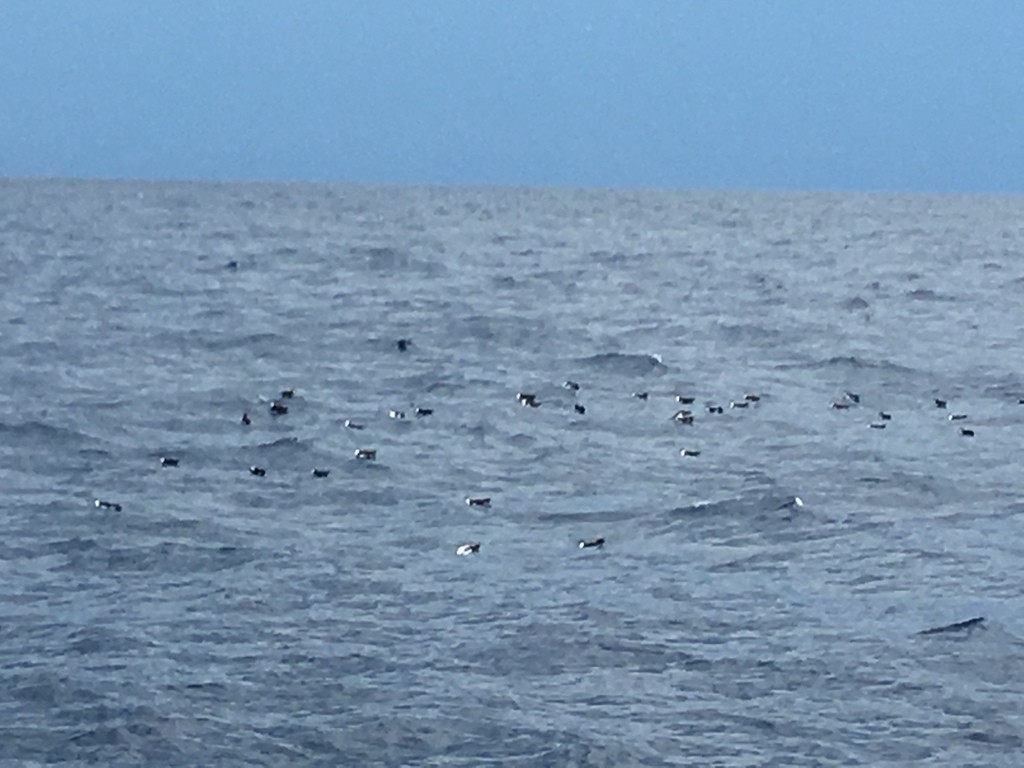Audubon's Shearwater
A species of Typical Shearwaters Scientific name : Puffinus lherminieri Genus : Typical Shearwaters
Audubon's Shearwater, A species of Typical Shearwaters
Botanical name: Puffinus lherminieri
Genus: Typical Shearwaters
Content
Description General Info
Description
Audubon's shearwaters are on average 30 cm (12 in) in length—about half the size of the greater shearwater (Puffinus gravis)—and weigh 170 g. There is some variation between populations, and the normal size and weight range is 30–33 cm (12–13 in) and 150–230 g (5.3–8.1 oz). The wingspan is 64 to 72 centimetres (25 to 28 in), the tail is around 8.5 centimetres (3.3 in) long, the exposed culmen measures 3 centimetres (1.2 in) or slightly less, and the tarsus is around 4 centimetres (1.6 in) in length. In general appearance, it is a small shearwater, black above and white below and hard to distinguish from its relatives at first glance. The upperparts, rectrices and undertail coverts are blackish-brown, as are at least the distal undersides of the remiges, but sometimes the entire feathers. The rest of the underparts are white, as is the head below eye level. The iris is dark, the feet are dull pink with a black wash and black toenails, and the bill is grey, darker towards the tip, and with a pinkish hue. Males and females look alike. Immature birds do not have a distinct plumage, while the nestlings are covered with down feathers, grey above and whitish on the belly. It can be confused with the Manx shearwater (P. puffinus), which has white undertail coverts and in direct comparison a longer bill. Other similar-looking species are usually completely allopatric, though the largely subantarctic little shearwater (P. assimilis) may occasionally range into waters where P. lherminieri is normally found. It has more white on the face and underwing, a smaller bill and greyish-blue feet. Its twittering calls and mewing are often only heard at night in the breeding colonies. 
Size
23 - 41 cm
Life Expectancy
19 years
Nest Placement
Burrow
Feeding Habits
Audubon's Shearwater mainly feeds on fish, squid, and crustaceans. They capture prey by diving and pursuit, often at night. These birds have specialized hunting techniques and may exhibit preferences for certain prey types.
Habitat
Audubon's Shearwater is typically found in marine habitats, frequenting offshore waters. It is a pelagic species, meaning it spends a significant portion of its life in the open ocean, away from coastal areas, though it is also found near land when in the vicinity of its breeding colonies. This bird species is generally associated with warmer seas in broad geographical regions such as the tropical and subtropical zones of the Atlantic, Pacific, and Indian Oceans.
Nest Behavior
Pair bonding for audubon's Shearwater starts around three months before egg-laying, involving bill-rubbing and vocalizing. They are nocturnally active at colonies, and both parents participate in caring for the egg and young.
Nest Characteristics
Audubon's Shearwater nests are typically found in narrow natural crevices, underground burrows, or under dense vegetation on islands. Mated pairs do not typically add nest lining to these sites.
Dite type
Piscivorous
General Info
Feeding Habits
Bird food type
Scientific Classification
Phylum
Chordates Class
Birds Order
Albatrosses and Petrels Family
Shearwaters and petrels Genus
Typical Shearwaters Species
Audubon's Shearwater 